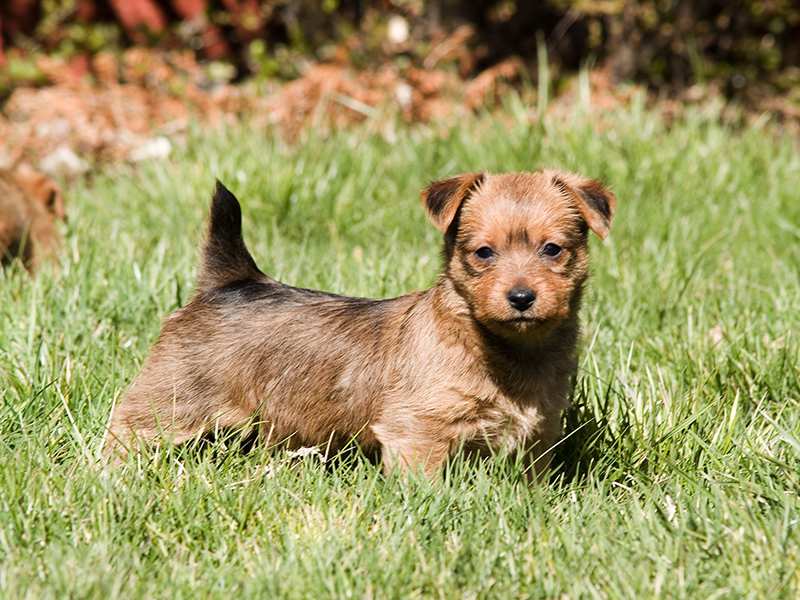Australian Terrier
Recommended for: Singles, families
Maintenance Level: Medium
Lifespan: 12-15 years
Temperament:Obedient, loyal
Health Risk:
This breed has an around average probability of having health issues in its lifetime, hence it is one of the more affordable breeds to isure.
This breed has an around average probability of having health issues in its lifetime, hence it is one of the more affordable breeds to isure.

The Australian Terrier (a.k.a. “Aussie”) is one of the
smallest terrier breeds. It is sturdy, short-legged and has a long head
with triangular, erect ears
and dark brown eyes.
Aussies shed a little, but they are easy to groom. A brush once a week, toenail trim once a month and a bath whenever necessary should be enough to keep your Aussie in top shape. Frequent baths are not recommended since they can turn the Aussie’s coarse, straight coat soft, which although is not harmful in anyway may detract from its standard appearance. They come in three colours: blue/tan, sandy, and red.
The average Australian Terrier weighs between 5.5 and 7 kg and stands around 23 – 28 cm tall. Their lifespan is 12 – 15 years.
Aussie Terriers do not need as much exercise as larger breeds, but should still be taken on a daily walk to satisfy its physical and mental needs. A bored Aussie can become destructive, loud, and resentful. Be sure to give the dog enough toys and activities – the Aussie is a working dog and will resort to digging or other destructive behaviours if you do not keep it occupied.
eeds to insure.and dark brown eyes.
Aussies shed a little, but they are easy to groom. A brush once a week, toenail trim once a month and a bath whenever necessary should be enough to keep your Aussie in top shape. Frequent baths are not recommended since they can turn the Aussie’s coarse, straight coat soft, which although is not harmful in anyway may detract from its standard appearance. They come in three colours: blue/tan, sandy, and red.
The average Australian Terrier weighs between 5.5 and 7 kg and stands around 23 – 28 cm tall. Their lifespan is 12 – 15 years.
Aussie Terriers do not need as much exercise as larger breeds, but should still be taken on a daily walk to satisfy its physical and mental needs. A bored Aussie can become destructive, loud, and resentful. Be sure to give the dog enough toys and activities – the Aussie is a working dog and will resort to digging or other destructive behaviours if you do not keep it occupied.
Personality and Temperament:

Unlike some other Terrier breeds, the Aussie tends to be more obedient and easier to train, though they can be quite stubborn. Training and socialising the dog from a very young age is the best way to ensure it becomes a well-rounded companion.
As with many smaller breeds, the Australian Terrier can be prone to Small Dog Syndrome, which is a name for behavioural problems caused by owners allowing their small dog to get away with things they would not allow a larger dog (for example, jumping). To avoid this, always remember that even a small dog is still a dog and should be treated the same way as one would treat a big dog, rather than treating it like a baby.
